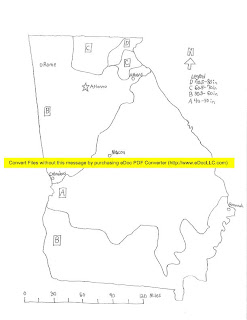For this lab we ventured out into the wilderness known as Mercer University Campus to learn about our leafy neighbors, the plants and trees. I'll detail some of the species we saw on our trek.
Yoshino Cherry Tree,
Prunus Yeodoensis
This tree grows mainly in Japan, Washington D. C., and here in Macon. It's a flowering tree with beautiful red to white blossoms.
Sycamore Maple tree, Acer Pseudoplatanus
One of the many various Acer genus trees that are across Mercer. This tree has a characteristic leaf pattern and is common in Europe, Asia, and North America with about 129 species of the Acer genus around the world.
Oak, the genus
Quercus (Quercus Robur shown in picture)
The oak genus is extremely expansive with about 600 species, many of which are in the Northern Hemisphere. It has various leaves although the picture above shows the average oak's leaf shape, and they drop acorns to propagate.
Chinese Chestnuts,
Castanea mollissima
The chinese chestnut is, well, from china and was brought here to North America after the fungal disease chestnut blight killed almost all of the chestnut trees here in Macon. They drop their chestnuts inside of spiney skins and the nut isn't as desired as the American Chestnuts' due to the nuts not being as sweet.
Larch Pine, genus
Larix
The
Larix genus is a coniferous tree similar in shape to what westerners think of as a "Christmas Tree".
Ageratum, genus
Ageratum
While beautiful, the genus
Ageratum is considered to be an endemic weed in the East United States, and can be toxic in large quantities to farm animals. It hosts a flurry of different colors that can be cultivated and used as garden flowers or decorative flowers.
Elephant Ear, Angel's Wings, Heart of Jesus, etc : genus
Araceae
This decorative plant has been used to spruce up gardens and fence lines since the 18th century. Its colors can vary from red to white to green and are very common.
Holly, genus
Ilex
Hollys are of the genus
Ilex and range from 400 to 600 species of plant. Many have barbed leaves and small berries that grow on them.
Poison Ivy, T
oxicodendron radicans
This innocuous plant is the bane of many a suburban mom's lives. Poison ivy delivers a toxin called urushiol that causes break-outs in other animals. This is a mechanism for protecting the plant against deer and other plant predators.
Hydrangea, genus Hydrangea
Hydrangeas are a genus of about 70 different species, from trees to shrubs to flowers to climbing vines. They have a myriad of colors and come in two main flower varieties. The one pictures is the lacecap flower style, while there is another called the mophead style where the flowers are poofy and bundled close together to resemble a common household mop.




























